HD is a rapidly growing format for post-production and capture.
For a summary of the growth in HD production Fxguide spoke to the team at Fletcher Chicago. Fletcher specialises in high-end High Definition capture and is a Sony USA Nationwide CineAlta Select supplier focused on renting and selling quality field acquisition equipment.
January 2003
At the 2003 North America International Auto Show in Detroit, 7 out of 10 major exhibits use High Definition for their trade show displays, according Grace and Wild, a major post facility servicing the automotive industry. Grace and Wild estimates that the 2004 show will have nearly all of the major companies using some form of HD for their acquisition, post or display.

For the first time in the Festival’s history, all of Sundance’s Film theaters are equipped for digital HD playback to accommodate the large percentage of HD originated and HD mastered movies in the competition. Such as feature films like Masked and Anonymous: The much anticipated feature starring Bob Dylan, Jessica Lange, John Goodman, Penelope Cruz, Jeff Bridges, Val Kilmer, Ed Harris, Christian Slater, & Mickey Rourke, which was shot with Sony’s CineAlta HDW-F900.
February
The ASC (American Society of Cinematographers) recognizes Robert Primes, ASC, with the Outstanding Achievement Award in the Episodic Television Competition for the Wing and a Prayer episode of “MDs.” The drama “MDs” was shot in 24p CineAlta. http://www.cinealta.com
March
ESPN launches their ESPN HD channel on March 30th. Multiple HD trucks are built to serve ESPN and other networks rapidly growing HD broadcast sports needs. “People want to watch sports in high-definition,” said Bryan Burns, ESPN’s vice president of strategic business planning and development, who has led ESPN’s HDTV efforts over the past year. Fletcher Chicago was tasked with retooling its Sports Department by providing over 25 Panasonic HD cameras.

Bowling for Columbine made Academy Award history: it is the first film shot in HD24p (Sony CineAlta), to win an Oscar‚.Although started in Super 16, halfway through production Moore had decided to switch to digital video acquisition because he was frustrated by the limitations of film. He turned to cinematographer Michael McDonough, whose DV work he’d admired.
Although he had yet to shoot an HD film himself, McDonough convinced Moore that the HDCAM format was the best choice for completing a documentary that was already half shot in Super 16 – and the best match to the look of film. The fact that a 40-minute HDCAM cassette costs only about $70 also helped ! Michael Moore accepted the Award for Best Documentary Feature at the ceremonies that were broadcast by ABC High Definition.
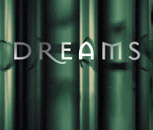
Sony Electronics and Young & Rubicam’s “Dreams” series continues with the premiere of the second collection entitled “Dreams ’03:Joy.” The showing consisted of eight short subjects shot by some of the top directors in the commercial production industry. Each piece, captured on the Sony 24P Cinealta camera, was unique in vision, range and complexity. DVD’s are available free from Sony : Dreams ’03 Joy DVD.
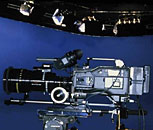
Millimeter Magazine reports on the use of 24p HD for Commercial Spot Production. See below for list of advertisers who have used 24p HD acquisition.
April
Landmark Theatres and Microsoft Corp. announced that they are equipping 177 screens in all Landmark Theatres across the United States with Digital Cinema playback system using Windows Media 9 Series technology. The goal is to open distribution for independent filmmakers by affording exhibitors with tangible cost savings and flexibility in booking smaller films. “Landmark’s mandate has always been to build an alternative infrastructure dedicated to the enhancement and proliferation of independent film,” said Bert Manzari, executive vice president of Landmark Theatres. “We exhibit over 250 films a year, and all too many of these films succeed or fail due to market economics rather than artistic accomplishment.”
A Dalsa Origin camera was unveiled at NAB. The prototype features an optical viewfinder, a 4k x 2k sensor, variable speeds and accepts PL mount lenses yielding the depth of field consistent with today’s 35mm film cameras. http://www.dalsa.com
24P Goes To War: Director of Photography and Marine Combat Camera Officer CWO2 B. Sean Fairburn, SOC, shoots 24p HD footage of Ground Combat Element using Sony F-900 and Fujinon HD Glass while accompanying Delta Company, 1st Tank Battalion, 7th Marine Regiment, 1st Marine Division from the breach at the Kuwait border to the tank battle crossing the bridge to Baghdad, taking the camera through the rigors of live combat for the Marine Corps. Fairburn has created a Miniseries called “Armor Clad Warriors” for Discovery Channel Networks based on the 50 hours of HD war footage which is set to air Sept 2004.
May
Sony Electronics names Fletcher Chicago and Band Pro their two National CineAlta Select representatives. Both companies are authorized to sell High Definition cameras and VTRs throughout the continental United States and Alaska.
June
George Lucas’ Star Wars Episode III begins principal photography using HDCAM SR Dual Link 4:4:4 (HDC-F950 camera, HDW-5000 VTR) with Fujinon lenses and Evertz’s meta-data conversion. This is the first ever production shot in HDCAM SR. “We first saw the possibility for 4:4:4 RGB recording in the HDCAM platform while shooting miniatures in Star Wars: Episode II Attack of the Clones, and we judged this to be the new high performance bar for the entire production of our final Episode III,” producer Rick McCallum says. Plus 8 Digital provided the equipment.
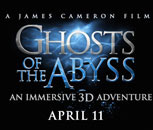
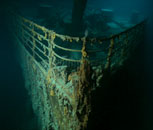
James Cameron’s Ghost of the Abyss opens in IMAX 3D theaters. It is the first IMAX film to be shot in 24p CineAlta. The revolutionary 3D system Cameron employed was developed by Vince Pace and Mike Cameron using Sony’s HDC-950T camera and Fujinon’s wide angle lenses. Jim Cameron calls it “the holy grail of 3D photography,” a system so versatile that it can be carried on the shoulder like a normal camera, mounted to a Steadicam rig, or squeezed into a deepwater housing. “Movies are artificial,” says Cameron. “We all see in 3D. We’re used to seeing the world that way. With movies in 2D, flat on a screen, that’s an artificial experience. That’s not how we experience life. With 3D, we’re taking away the screen. You are looking through a window into a reality. That’s why we call the camera the Reality Camera System – we’re trying to share the reality we had, when we were on the expedition, with the audience.”
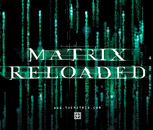
The Wachowski Brothers’ final two installments of their blockbuster Matrix trilogy, Matrix Reloaded and Matrix Revolutions, uses HDCAM in it’s creation. “It was evident that we couldn’t go any further by utilizing the technology from the first Bullet Time shots,” says Visual Effects Supervisor John Gaeta. “It was too restrictive and too labor intensive. The concept of Bullet Time needed to graduate to the true technology it suggested.”
Central to this new technology were five HDW-F900 CineAlta Camcorders, arranged in a semi-circle to capture in true high resolution the varying expressions of the various actors. These five real-time recordings were digitally combined and integrated with motion-captured data to create ‘the most realistic computer-generated human images rendered to date.’
July
Director Robert Rodriguez’s Spy Kids 3D: Game Over opens in theaters, grossing over $32.5 million in the first weekend. This inventive, colorful and well-received family feature was shot using with the same HD technology James Cameron utilized on Ghosts of the Abyss.
According to Rodriguez, Spy Kids 3D couldn’t have been made without the Reality Camera System, invented by director James Cameron, DoP Vince Pace and Sony, the system consists of two custom-designed HDC-950 cameras in which their image sensors have been separated from the main body of the camera and rehoused 70mm apart – the same distance between a pair of human eyes.
The Reality Camera System is not only far easier to manoeuvre and operate than previous systems, but rather than having to wait for dailies to be processed, Rodriguez enjoyed immediate 3D playback on-set, and the focal depth of imagery could be easily adjusted and checked in real-time.
August
Production for the new Fall Television Season begins with more than 40 shows being shot with in HD. See the list below.
September
Once Upon A Time In Mexico, directed by Robert Rodriguez, opens to positive reviews, many complimenting Rodriguez on the high quality of his aesthetic look. For example, Roger Ebert, writing in the Chicago Sun-Times, had this to say: “As a skeptic about digital feature photography and a supporter of light through celluloid, I have to admit that this movie looks great. Maybe the camera has been improved…but the picture is bright, crisp and detailed.” Ebert Review. Actually Mr. Rodriquez shot the movie in 2000, with the previous software version in the camera. With a reported budget of $29 million, it opens with over a $23 million weekend box office.
On September 12th, the FOX Broadcasting Company announces that it has adopted Sony’s high-definition HDCAM SR™ technology for all of their network program delivery.
Arriflex introduces D-20 Digital Camera at IBC. The camera features an optical viewfinder, a 35mm-size CMOS sensor, 1080p, and variable speeds. It is compatible with existing PL mount lenses. Delivery is 2005-2006.
October
Major League Baseball’s new campaign “I Live for This” which aired during the World Series, is directed by Peter Gilbert, nonfiction spots. To date, Gilbert has shot over 100 national spots using 24p CineAlta.
November
Seeking to complement high audio quality with striking visuals, the music industry turned more and more to the HD format as the ideal marriage of the two. Shows such as WTTW’s Soundstage (HD Ready produced), featuring artists such as Lyle Lovett, Tom Petty, and Farm AID, and music DVD releases like titles from Neil Young, Sheryl Crow, Train, the George Harrison tribute concert, and Billy Corgan all were acquired with Sony HD cameras.
December
Robert Altman, “The Company” opened December 25th shot in 24p in Chicago.
David Fincher produces “Gamebreakers” spot for Nike using Thomson’s Viper camera.
WGN-DT announces all their Cubs, White Sox and Bulls home game telecasts will be produced in HDTV. Trio Video, WGN’s supplier, rolls out “Tango,” their premier HD mobile unit on December 31st 2003.
Larry Thorpe, who many credit as most influential person in bringing 24p High Definition to life, announces his retirement from Sony Electronics after 22 years. In his tenure at Sony, Larry was a leading force in the development of, first, analog HD recording in the early 1980s, and then digital HDCAM and HDCAM SR recording beginning in the late 1990s.
Addendum
List of HD Shows (Primary Source: Sony Electronics)
All shows shot with Sony CineAlta HDCAM (unless noted)
ABC 8 Simple Rules for Dating my Teenage Daughter
ABC According to Jim
ABC The George Lopez Show
ABC Hope & Faith
ABC I’m with Her
ABC It’s all Relative
ABC Less than Perfect
ABC Life with Bonnie
ABC Married to the Kellys
ABC My Wife and Kids
ABC That was Then
CBS Becker
CBS Joan of Arcadia
CBS Still Standing
CBS Yes Dear
FOX A Minute with Stan Hooper
FOX Bernie Mac
FOX Cracking Up
FOX Luis
FOX Oliver Beene
FOX The Ortegas
FOX Wanda at Large
FOX Arrested Development (Varicam)
NBC Coupling
NBC Happy Family
NBC Whoopi
PBS American Family
PBS Soundstage
UPN All of Us
UPN Girlfriends
UPN Half & Half
UPN One on One
UPN Rock Me Baby
UPN The Mullets
UPN The Parkers
WB All About the Andersons
WB Angel
WB Grounded for Life
WB Like Family
WB Reba
WB What I Like About You
HD Originated National Spot Advertiser List (Partial List)
Apple
AT&T
Blue Cross
Budweiser
Ford
Hallmark
Johnson & Johnson
Kraft Foods
Little Caesars
Lowes
Mastercard
McDonald’s
Mitsubishi
MLB
Nissan
Nike
Nokia
Oldsmobile
Pizza Hut
Procter and Gamble
Radio Shack
Sony
Toyota
Tylenol
US Army
YMCA
